
How to Use BW16: Examples, Pinouts, and Specs
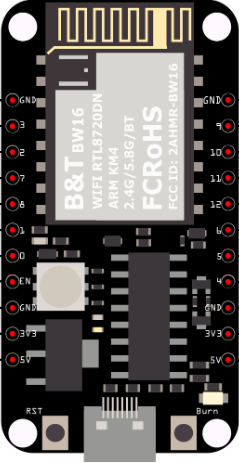
 Design with BW16 in Cirkit Designer
Design with BW16 in Cirkit DesignerIntroduction
The BW16, manufactured by Realtek with the part ID RTL8720DN, is a versatile Wi-Fi and Bluetooth module designed for Internet of Things (IoT) applications. This module integrates a high-performance microcontroller, making it an ideal choice for projects requiring wireless connectivity. The BW16 supports both Wi-Fi and Bluetooth communication, enabling seamless integration into a wide range of applications, including smart home devices, wearable technology, and industrial automation.
Explore Projects Built with BW16
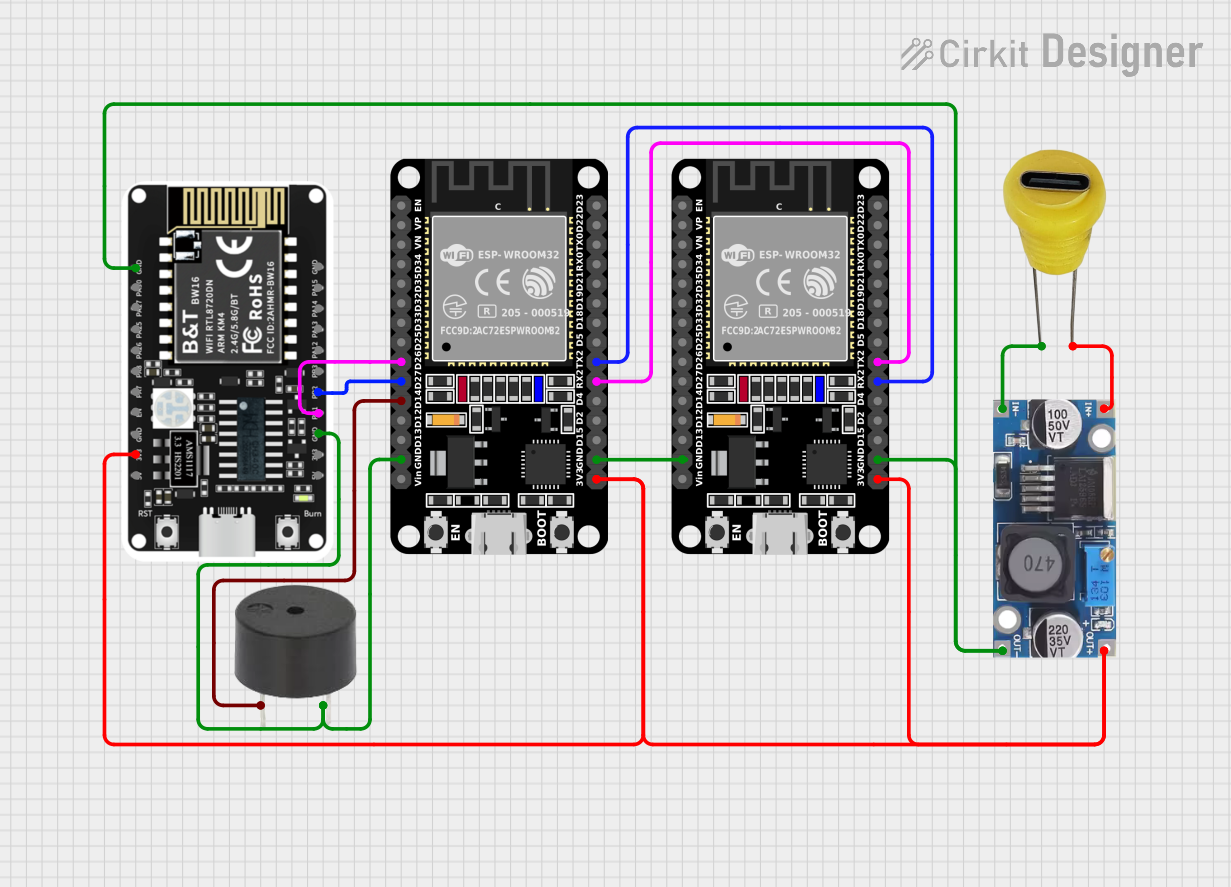
 Open Project in Cirkit Designer
Open Project in Cirkit Designer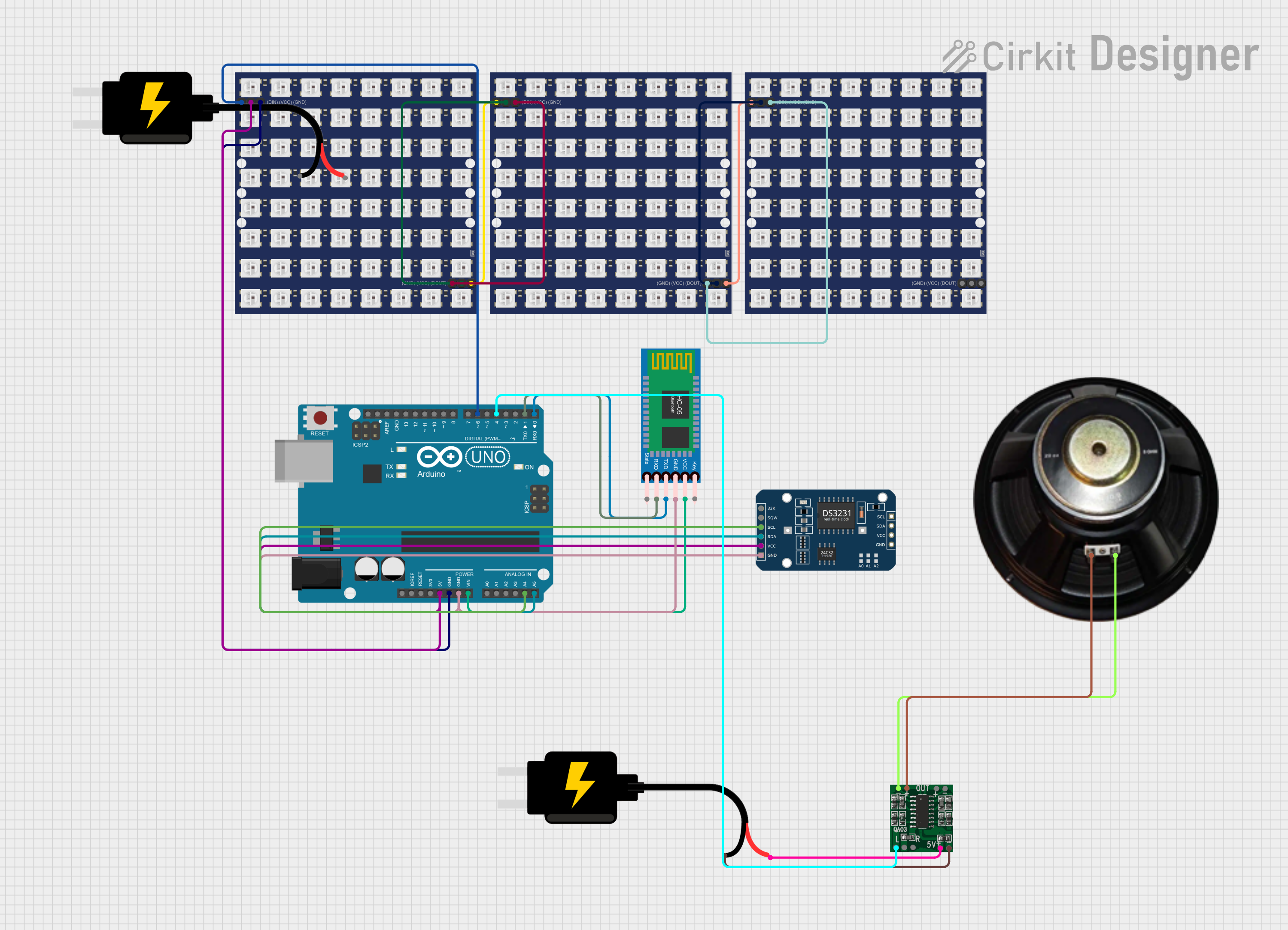
 Open Project in Cirkit Designer
Open Project in Cirkit Designer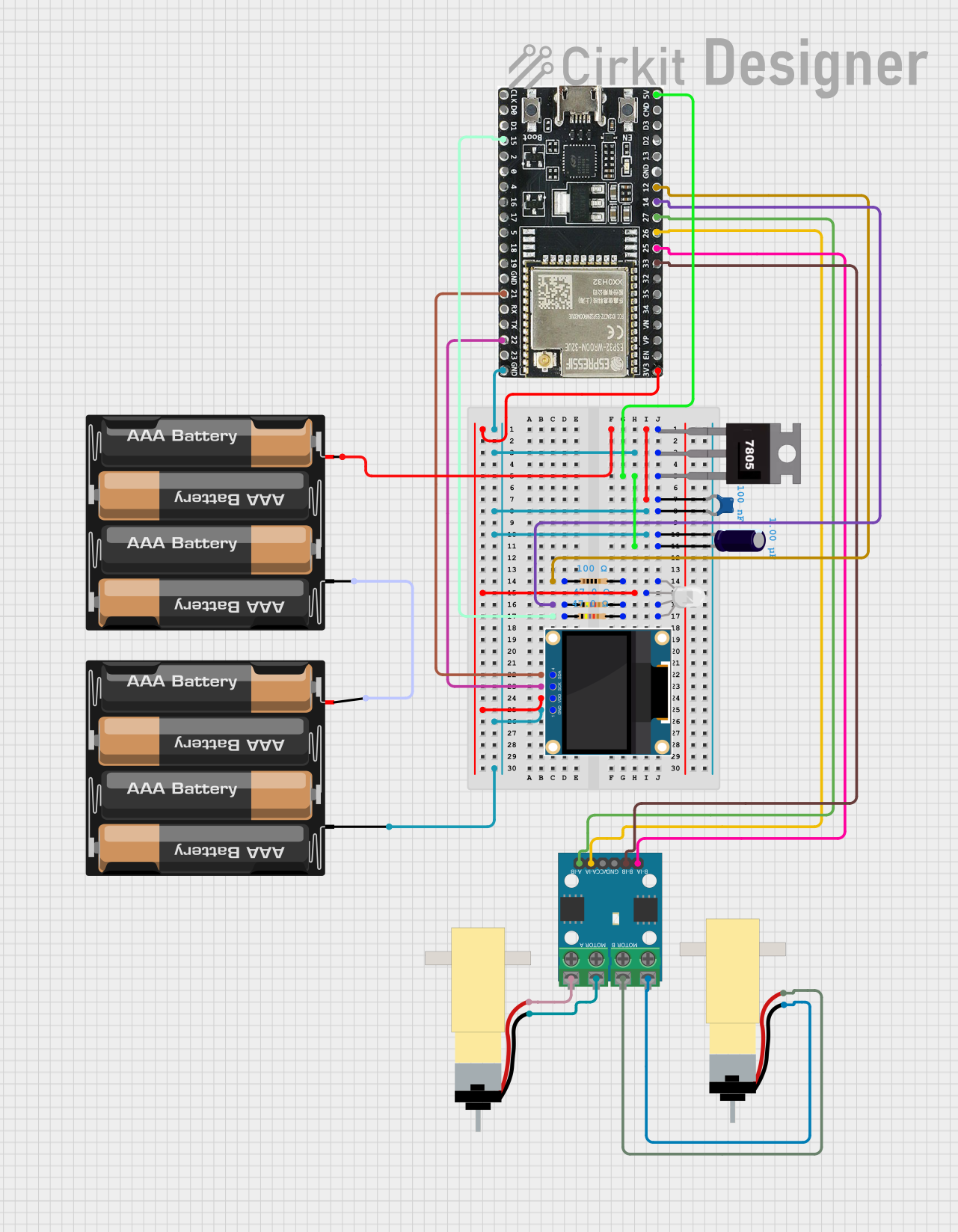
 Open Project in Cirkit Designer
Open Project in Cirkit Designer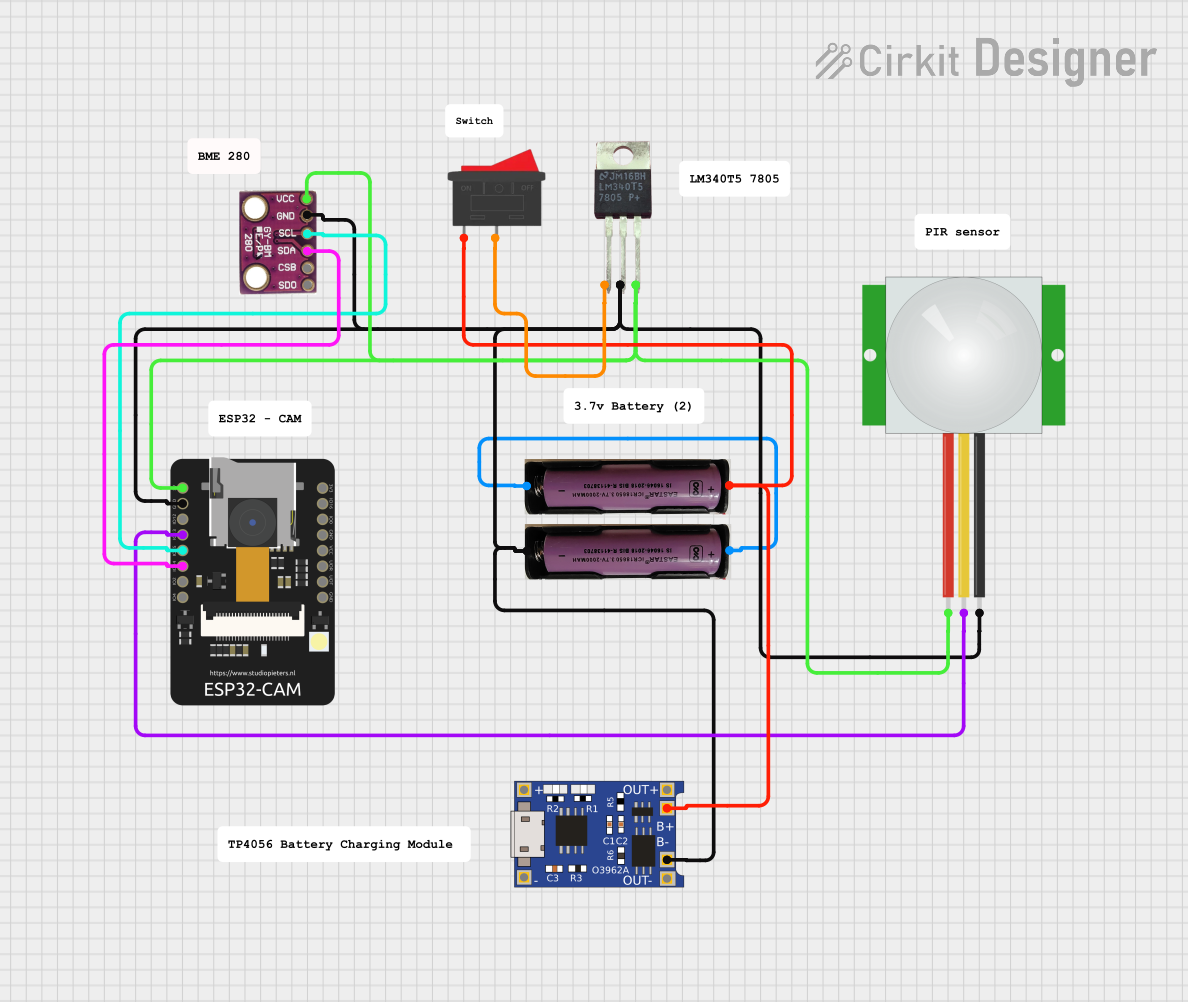
 Open Project in Cirkit Designer
Open Project in Cirkit DesignerExplore Projects Built with BW16

 Open Project in Cirkit Designer
Open Project in Cirkit Designer
 Open Project in Cirkit Designer
Open Project in Cirkit Designer
 Open Project in Cirkit Designer
Open Project in Cirkit Designer
 Open Project in Cirkit Designer
Open Project in Cirkit DesignerTechnical Specifications
Key Technical Details
| Parameter | Value |
|---|---|
| Manufacturer | Realtek |
| Part ID | RTL8720DN |
| Wi-Fi Standard | 802.11 b/g/n |
| Bluetooth Standard | Bluetooth 5.0 |
| Operating Voltage | 3.3V |
| Operating Current | 80mA (Wi-Fi), 30mA (Bluetooth) |
| Flash Memory | 2MB |
| SRAM | 512KB |
| Operating Temperature | -40°C to 85°C |
| Dimensions | 18mm x 20mm x 3mm |
Pin Configuration and Descriptions
| Pin Number | Pin Name | Description |
|---|---|---|
| 1 | VCC | Power supply (3.3V) |
| 2 | GND | Ground |
| 3 | TXD | UART Transmit Data |
| 4 | RXD | UART Receive Data |
| 5 | GPIO0 | General Purpose Input/Output 0 |
| 6 | GPIO1 | General Purpose Input/Output 1 |
| 7 | GPIO2 | General Purpose Input/Output 2 |
| 8 | GPIO3 | General Purpose Input/Output 3 |
| 9 | ADC | Analog to Digital Converter Input |
| 10 | PWM | Pulse Width Modulation Output |
| 11 | RST | Reset |
| 12 | EN | Enable |
Usage Instructions
How to Use the BW16 in a Circuit
- Power Supply: Connect the VCC pin to a 3.3V power source and the GND pin to the ground.
- UART Communication: Connect the TXD pin to the RX pin of your microcontroller and the RXD pin to the TX pin of your microcontroller for serial communication.
- GPIO Pins: Use the GPIO pins for general-purpose input/output operations. These can be configured as either input or output depending on your application.
- ADC: Connect an analog sensor to the ADC pin to read analog values.
- PWM: Use the PWM pin to control devices like LEDs or motors with pulse width modulation.
- Reset and Enable: Connect the RST pin to a push button for manual reset and the EN pin to enable the module.
Important Considerations and Best Practices
- Power Supply: Ensure a stable 3.3V power supply to avoid damaging the module.
- Antenna Placement: For optimal wireless performance, place the module away from metal objects and other sources of interference.
- Firmware Updates: Regularly check for firmware updates from Realtek to ensure the module operates with the latest features and security patches.
- Heat Management: If operating in high-temperature environments, consider adding heat sinks or other cooling mechanisms.
Example Code for Arduino UNO
Below is an example code to connect the BW16 module to an Arduino UNO for basic Wi-Fi communication.
#include <SoftwareSerial.h>
SoftwareSerial bw16(10, 11); // RX, TX
void setup() {
Serial.begin(9600); // Initialize serial communication at 9600 baud
bw16.begin(9600); // Initialize BW16 serial communication at 9600 baud
Serial.println("BW16 Wi-Fi Module Test");
bw16.println("AT"); // Send AT command to BW16
}
void loop() {
if (bw16.available()) { // Check if BW16 has sent data
String response = bw16.readString();
Serial.println(response); // Print the response from BW16 to Serial Monitor
}
if (Serial.available()) { // Check if user has sent data from Serial Monitor
String command = Serial.readString();
bw16.println(command); // Send the command to BW16
}
}
Troubleshooting and FAQs
Common Issues and Solutions
Module Not Responding:
- Solution: Check the power supply and ensure it is stable at 3.3V. Verify the connections, especially the TX and RX pins.
Wi-Fi Connection Issues:
- Solution: Ensure the correct SSID and password are used. Check for interference from other wireless devices.
Bluetooth Pairing Problems:
- Solution: Make sure the module is in pairing mode. Verify that the device you are pairing with supports Bluetooth 5.0.
Overheating:
- Solution: Ensure proper ventilation and consider adding a heat sink if the module operates in a high-temperature environment.
FAQs
Can the BW16 operate on 5V?
- No, the BW16 operates on a 3.3V power supply. Using 5V can damage the module.
How do I update the firmware?
- Firmware updates can be obtained from Realtek's official website. Follow the provided instructions for updating the firmware.
Can I use the BW16 for both Wi-Fi and Bluetooth simultaneously?
- Yes, the BW16 supports simultaneous Wi-Fi and Bluetooth operation, making it ideal for complex IoT applications.
By following this documentation, users can effectively integrate the BW16 module into their projects, ensuring reliable and efficient wireless communication.